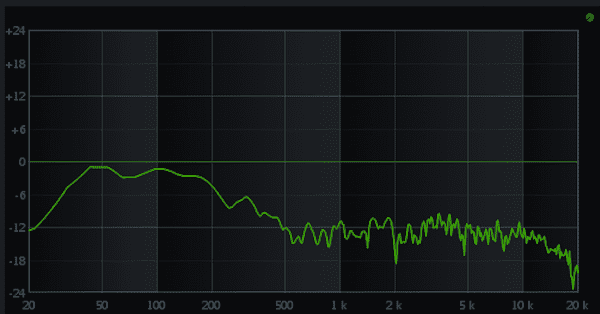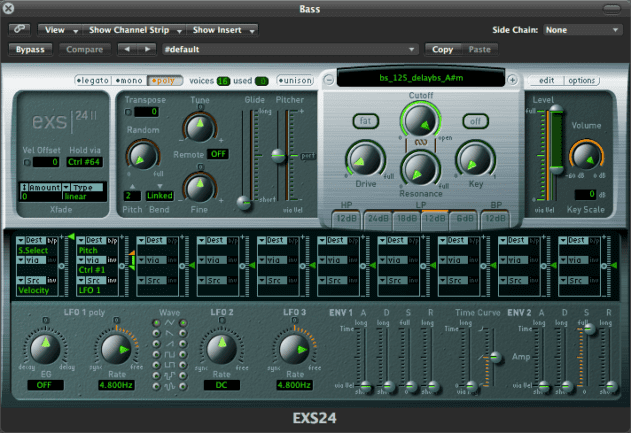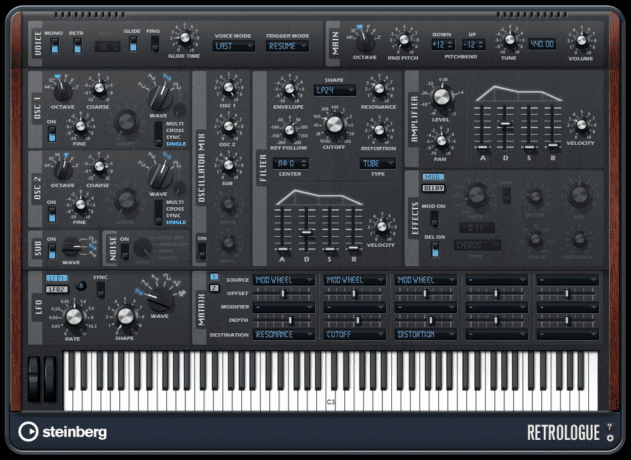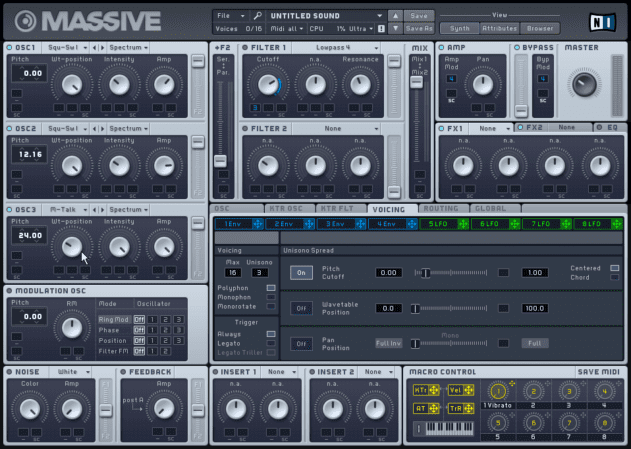From synthesis to mixdown, we offer ten tips for producing punchy, powerful basslines. Follow these guidelines and you’ll be well on the way to low-frequency perfection.
If there’s one thing which unites almost all electronic music producers, it’s the quest for the perfect bassline. It’s hardly surprising when you consider how many things there are to get right: the melody itself; the synth sound; effects; compression; EQ; interaction with the kick drum and other elements. No wonder producers of virtually every genre of dance music obsess over bass. Here we’ll offer ten bass tips which will make life easier for producers of any genre of electronic music. From synthesis to mixdown, here’s how to approach the bottom end.
Note that these tips aren’t in the order – every bassline needs a slightly different approach. We’re not suggesting you should (necessarily) follow all the tips in this order for every bass.
1. Start with the right sound
It’s far more difficult to process an inappropriate sound in order to make it sound good than it is just to get it right at the source. This one might sound obvious, but it’s one of the most important guidelines when creating bass sounds: don’t make life difficult for yourself by starting with a poor sound and then trying to fix it. Take a step back, get the sound right in your synth or sampler first, then move forward.
Exactly what constitutes a ‘good’ sound is, of course, totally subjective. Some tracks might call for a super aggressive bass sound which dominates the mix. On other occasions, something more subtle and mellow works best. It’s good to have a rough idea what kind of sound you’re aiming for before you start so you’re not just fumbling around aimlessly until you discover something suitable. It also means having an awareness of the genre within which you’re working, and the bassline’s context in relation to other mix elements. We certainly aren’t suggesting you should be a slave to genre conventions, but having an understanding of them will help you figure out what tends to work best – and allow you to break the rules to create something new.
In terms of sound sources, one of the simplest approaches is to take an audio sample of an existing bass note and load it into your favourite sampler. Here’s a simple example in Logic’s built-in EXS24 sampler plugin:
The downside to this approach is that while you can make some tweaks (depending on the capabilities of your sampler), you can’t easily alter the subtleties of the tone or make the sound longer – so limitations are apparent from the start. As such, sampled bass sounds tend to be most suited to cases where you absolutely must use a sound from an existing audio recording.
Perhaps the most obviously versatile source of a good bass sound is a decent subtractive synth – whether hardware or software. Here we’re using Steinberg’s Retrologue, one of the excellent synth plugins built into Cubase:
As you’d expect, a synth provides a lot more flexibility than a sampler, allowing you to tailor the sound to suit the track by applying processes such as filtering and modulation to your choice of oscillator sources.
For example, let’s start with a sawtooth wave…
Now apply a low-pass filter and adjust the filter envelope to make the sound more punchy and less bright:
The ‘shape’ of the sound is as important as its overall harmonic make-up. Subtractive synthesis (as used by all analogue or analogue-style synths) is generally best for more traditional bass sounds. This was the main synthesis approach used during the 70s, so there’s an inherently retro character to many (if not necessarily all) subtractive synths.
A variation on the subtractive synth is Native Instruments’ Massive, which combines a subtractive synth architecture with wavetable oscillators:
Massive has been particularly popular in dubstep over the last few years, providing the bottom end for hundreds of tracks. By modulating the wavetable oscillator with an LFO we can create all kinds of wobble effects:
Synthesis approaches like Massive’s wavetable options or FM8‘s frequency modulation architecture are generally best suited to more modern, aggressive sounds.
If you’re creating bass sounds from scratch, remember that a bassline doesn’t exist in isolation – it has to fit well within the context of a track, and this has an effect on what you can do with other elements. Thinking about the bigger picture of the track is essential as you start to create the perfect bass sound to fit.




08.15 PM
Nice article guys! I’m lovin Attack Magazine, in my opinion it’s the best website about electronic music 😉 thanks a lot! Cheers from Brazil
08.30 AM
I am really really enjoying the work you are doing with your articles!
Keep up the good work.
05.11 PM
I love these articles! I noticed that this lesson said it would teach us to make better basslines, but even though in the first page it saya that melody is one of the main things that needs to be considered; but there arent any specific tips in this article about choosing bassline notes! 🙂
I love you guys, can ya break that part down some more? Or do you just do the melody by ear?
07.04 PM
^ BIlly, I don’t want to be annoying but this article is one of the most complete I’ve ever seen on the internet. It’s kinda ungrateful to ask EVEN more about it… seriously :/
07.53 PM
@Billy, @Claudio…
No problems at all with the request…
It’s true that, of course, the melody plays a (the?) fundamental part in a successful bassline. This piece wasn’t about programming – but I certainly suggest reading the various Passing Notes pieces (http://www.attackmagazine.com/technique/passing-notes/) which are designed to give a good grounding in music theory, including the disco basslines piece (http://www.attackmagazine.com/technique/passing-notes/passing-notes-disco-house-basslines/) which has a lot of insights – even if you hate disco!
And, as ever, keep watching this space!
Dave@Attack
06.21 AM
Really helpful stuff, muchas gracias amigos!
10.02 PM
holycow. its difficult
on one dark-hand side i hope this page stays my my my own sweet little secret…. anyhow thanks for ur great work!!!
01.23 PM
This is a great article, thanks! However, the bass player plugin shows that there is no substitute for a real practiced human! Or a sample of one: but then of course you have to spend three months slicing and dicing ala Justice to keep the lawyers off your tail!
10.28 AM
hi, I own the tal u no lx but i cant find the mrs digit preset, does it come with it or is named something else?
Thanks!
11.11 AM
Luke – well spotted. We’re pretty sure the Mrs Digit patch is a Mr Fingers-inspired bass sound the writer created for the audio example. U-NO-LX is so simple that you should be able to copy the patch from the screengrab (although we had to increase the filter cutoff slightly to get the same sound).
If you’re looking for an even more accurate version of the classic Larry Heard sound, try the sub-oscillator on its own. Or you could use the pulse oscillator and set the pulse width manually to get a variety of slightly fuller or hollower sounds.
U-NO-LX is excellent for those 80s analogue bass sounds. We’re big fans.
http://www.attackmagazine.com/reviews/gear-software/tal-u-no-lx/
12.58 AM
Attack WE LOVE YOU.
03.37 PM
Thanks so much for this. Learning so much through your tutorials.
04.52 PM
very hot magazine! keep it coming
01.08 AM
this tutorial came in very handy for me, thank you attack people..very well written and it reminded me of some stuff i (probably) already had forgotten to consider again. big ups from vienna
02.28 AM
attack magazine thank you very much. very useful article .
08.28 PM
Awesome article. Thanks
12.47 AM
Another incredible article. Informative and clearly explained.
Attack is rapidly becoming my number one resource for production tips.
03.53 PM
Just got wind of this site. I will definitely be here more than ever. Really enlightening
08.22 PM
Just found this magazine, excellent well written articles. This one was excellent and covered lots of stuff. Ill be trying that notch on my bass eq real soon. Keep it up guys, great stuff
03.41 AM
If you’re using reverb on your bass, put the EQ before the reverb. It won’t matter so much for bass as for other instruments, but it will sound somewhat unnatural to have the reverb filtered.
01.36 PM
How have I missed this article? Great read as ever guys and very informative!
08.02 PM
great article but please for the love of god fix or change the sound player, its freezes after 2 seconds and never starts playing again, i have to refresh couple of times to even hear the whole soundclip
09.55 AM
I am new to this site and I must say the few articles I’ve read are quite good.
keep up the good work
12.55 AM
The best articles I’ve read in my life. Great work guys. Keep it up!
10.54 AM
Awesome tips—could u possibly provide the readers with a PDF version of the articles?
11.00 AM
amazing stuff guys……..really great content!
06.32 PM
Does this work on 808 bass?
12.16 AM
THIS IS SHIT
10.42 PM
Thanks for all of your excellent tutorials
06.04 PM
Nice article. I have just released a free youtube series on how to write bass lines too. Check it out!
https://www.youtube.com/watch?v=NHIHncaNaDw
02.55 PM
Any other software alternatives for the VOG plug-in you mentioned for boosting low-end?
Boz ‘Bark Of Dog’ resonant filter?
Tone2 Bifilter?
Any EQ like the Logic EQ or Pro-Q with a resonant low-shelf?
02.55 PM
oh, and great article btw. Attack Mag is fast becoming my favourite site for these tips and walkthroughs!
05.27 PM
Thanks! Best tutorial